How I Came Up with Three Kind Words
I’ve always been fascinated by how small things can carry unexpected weight. Like a handwritten note or a kind word from a friend. Words have meaning, and sometimes, the right ones can change everything.
Ever since I first stumbled upon direct mail APIs like PostGrid.com and Lob.com, a quiet curiosity took root inside me. For years, I played around with the idea of sending postcards from the internet. Not as marketing, not as souvenirs, but as something creative and personalized. I wasn’t sure what form it should take, only that I wanted to create a way for people to send something simple, meaningful, and real.
AutoPostcard.com
My first idea was a service that would send a series of postcards. Imagine receiving one postcard after another, perhaps every week, that together form a picture, tell a story, or reveal a hidden message. My enthusiasm led me to purchase the domain AutoPostcard.com and take the concept through Startup School. I envisioned a platform where folks could automate postcard delivery to friends, family, or followers. I imagined that it could plug into Patreon or Kickstarter as an easy way to offer unique rewards for the creator economy.
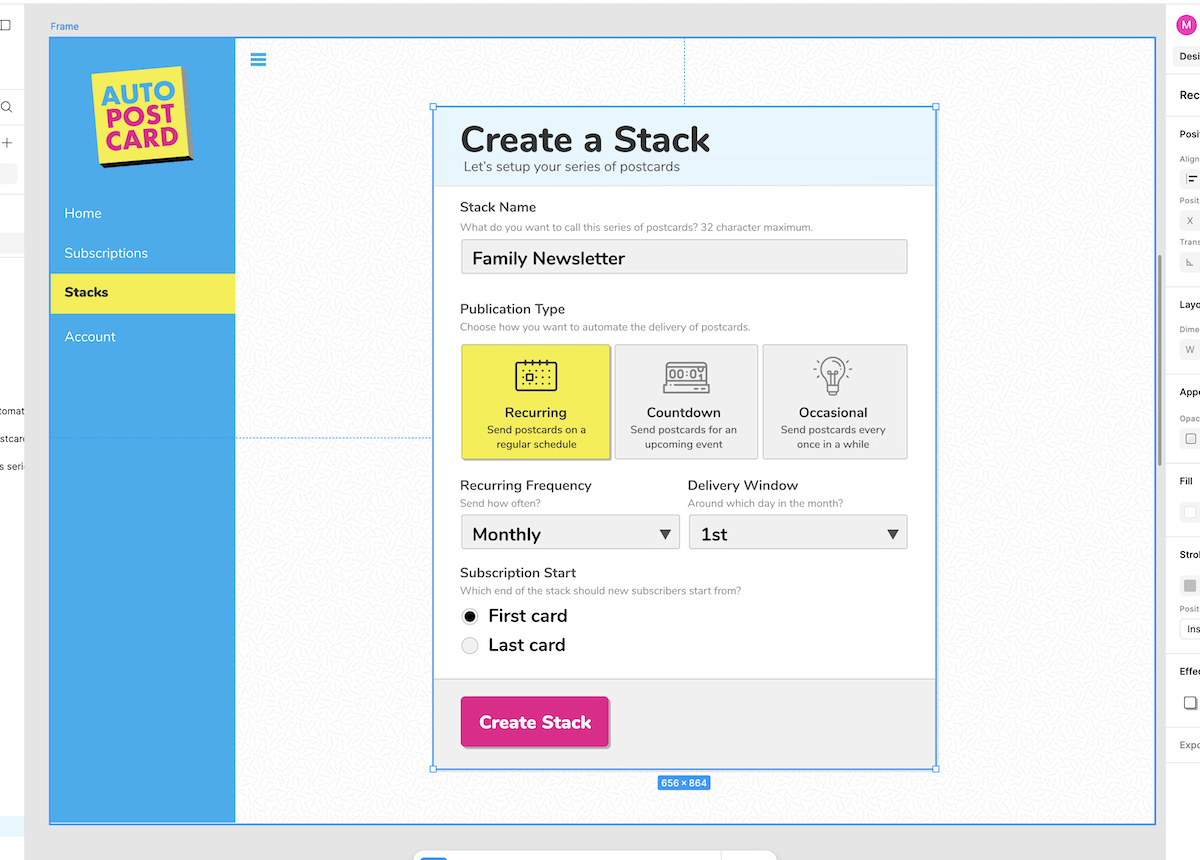
Old Figma mockup of AutoPostcard.com, showing the interface for creating automated postcard series
Startup School would match me with new founders every week, and we had to pitch our ideas to each other. Conversations kept circling back to a few questions: Why would anyone want to automate sending postcards? What’s on the cards? What problem does it solve? The answers were murky. With work, family, and buying an old house, I eventually let the dream of AutoPostcard go. Then someone snatched it up and try to sell it back to me for $119. I moved on.
Something New
Fast forward a few years. Life got busier: another child arrived, my day job kept me busy, and side projects took a backseat. Then, on a long, uneventful drive home from a beach trip last summer, inspiration struck. As I listened to music on a quiet highway, the answer to my long-standing postcard puzzle hit me like a flash of clarity.
What if each postcard carried just one word, and together they formed a simple, heartfelt message? Suddenly, phrases like “I love you” or “you got this” popped into my head, and soon I was dreaming up a catalog of three- to five-word messages. These postcards could arrive slowly, building mystery and intrigue.
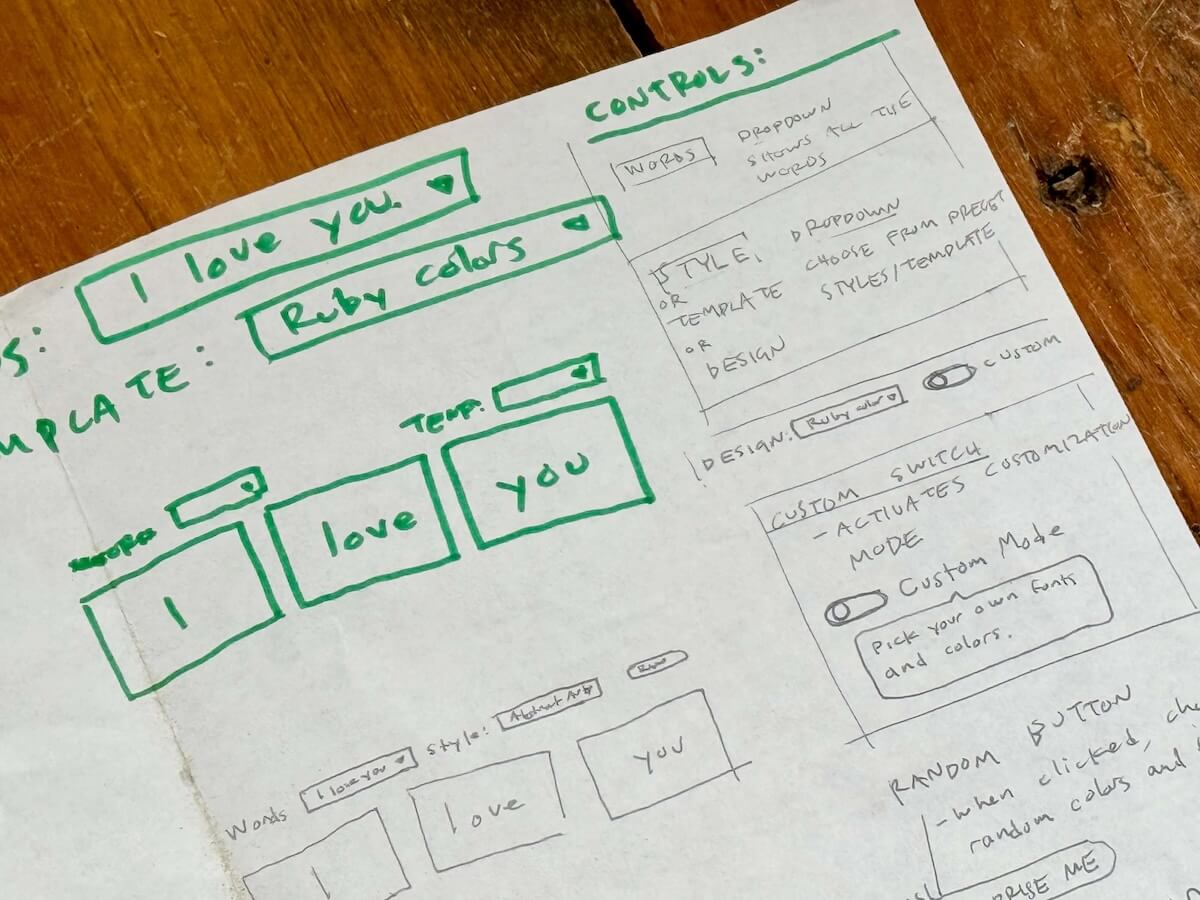
Sketches of the Three Kind Words concept
As I thought about it more, one thing became clear pretty quickly: letting users write their own messages would invite trouble. Instead, I opted for a curated list of three-word messages, each imbued with a spark of kindness. I turned to an LLM to help me generate a slew of possibilities. Finally, the content puzzle that had haunted the AutoPostcard phase was solved. I wasn’t just sending postcards, I was sending kind words.
Finding a Name
After letting the idea simmer for a few weeks, I was ready to give it a name. I knew it had to be a dot com domain, something simple that people could say. With some brainstorming and a little help from an LLM, I landed on ThreeKindWords.com. I couldn’t believe it was available, and I felt it encapsulated the spirit of the project perfectly. My wife shared my enthusiasm, and I bought the domain for $12.99. That simple moment of serendipity marked the official birth of Three Kind Words.
With a name in hand, I needed a logo. I asked an LLM to generate a few options, and all of them were terrible. So I did it the old-fashioned way. I fired up Illustrator and started sketching.
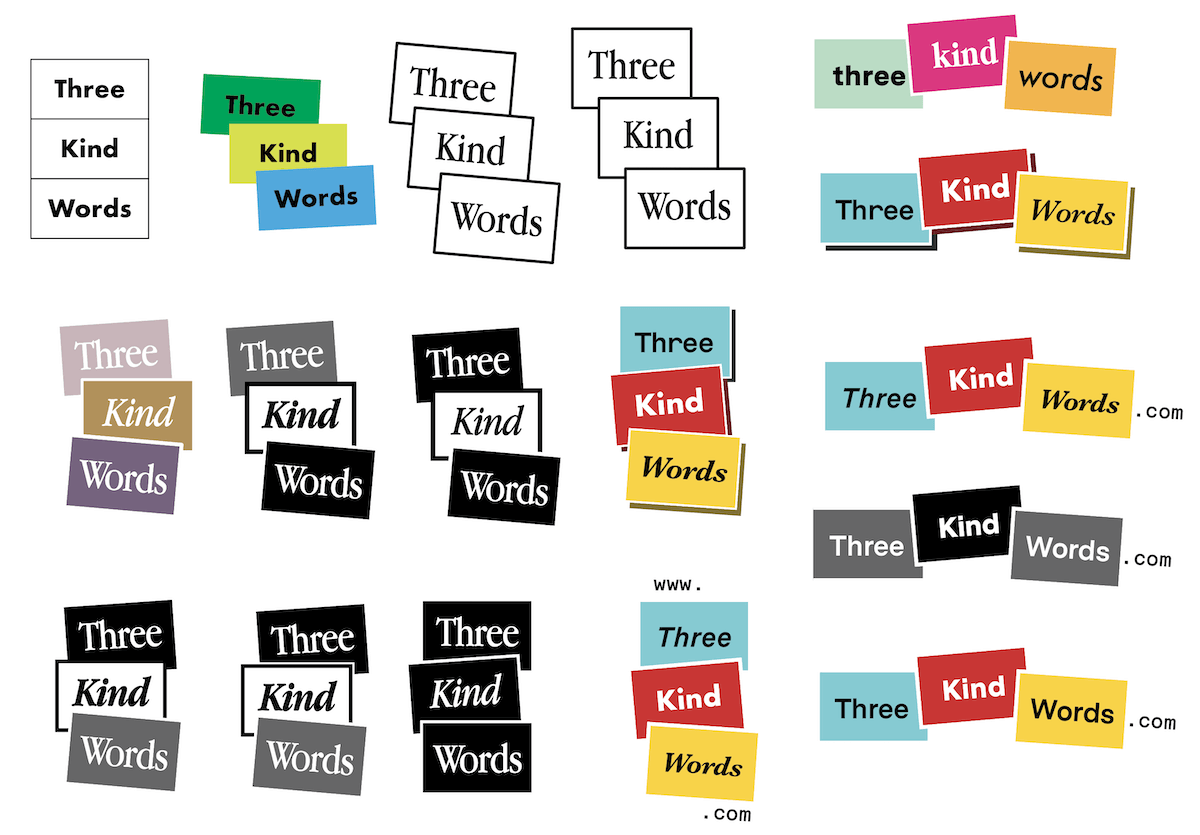
Figuring out the logo
Designing the Postcard
With the branding and concept in place, I set about sketching designs for the postcards. I envisioned a series where the first two cards stayed anonymous and the final card revealed the sender’s identity. I experimented with simple yet vibrant designs, starting with a single word in bold against a striking background. I played with gradients, color harmonies, and fonts until it felt simple and just right.
To get a tangible feel, I prototyped my ideas by printing out designs on cardstock using my inkjet printer. Working in software all day, it’s easy to forget the type of work it takes to make graphic design physical. Things like the weight of the paper, quality of the ink, and sharpness of the text all work in a different way.
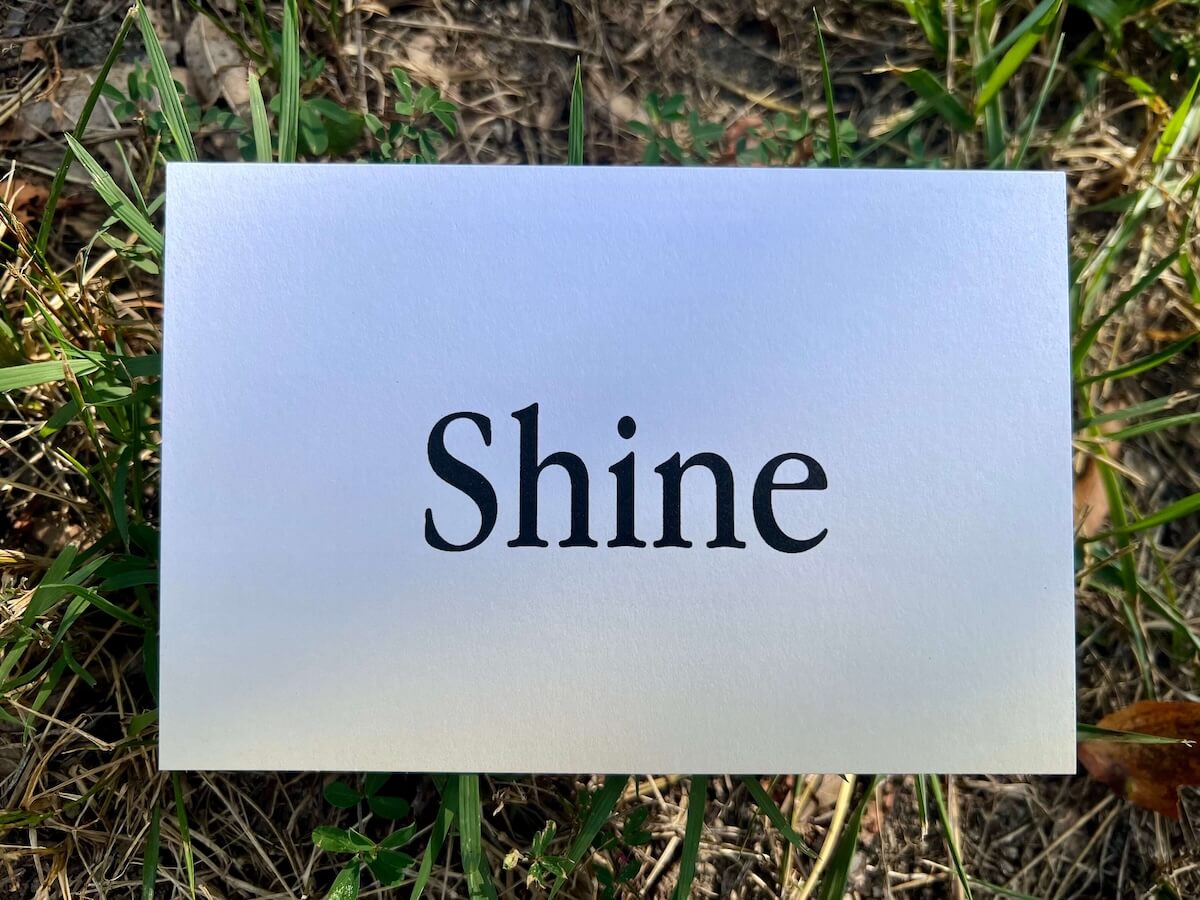
The first postcard design
Is it valuable?
I decided to validate my hunch the good old-fashioned way. I printed several sets of postcards and manually mailed them to friends and family, meticulously tracking the schedule over three weeks. I was nervous at first, would anyone notice these weird postcards in their mail? Would people just throw them away?
The responses were really encouraging. I received photos of the three cards neatly lined up, heartfelt messages of thanks, and even suggestions for new words. It was clear: people genuinely appreciated the unexpected gesture. There was something here, but I didn’t yet know what.
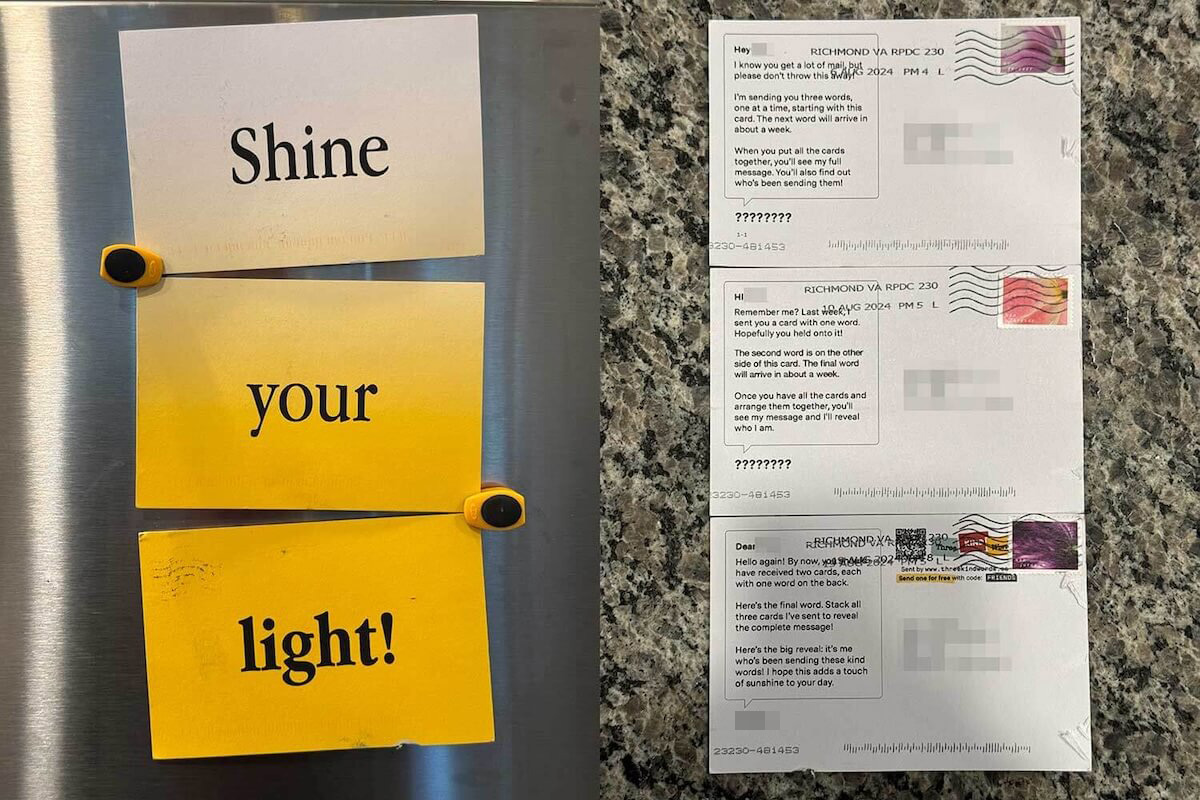
My friend sent me this photo of the cards he received
Is it feasible?
Next came the tech challenge: integrating with the APIs. I built some HTML templates that mirrored my designs and set up a test with PostGrid.com. With a few command-line calls, I triggered an order for a postcard. It took about six days for the card to arrive. Its quality was on par with typical junk mail, complete with a UV coating and a charmingly scuffed look from mail processing.
I sent out another set to a friend over a three week period, mimicking the eventual automated process. The feedback was clear: even if the card looked like ordinary mail at first glance, curiosity and delight kept people waiting for the next message.
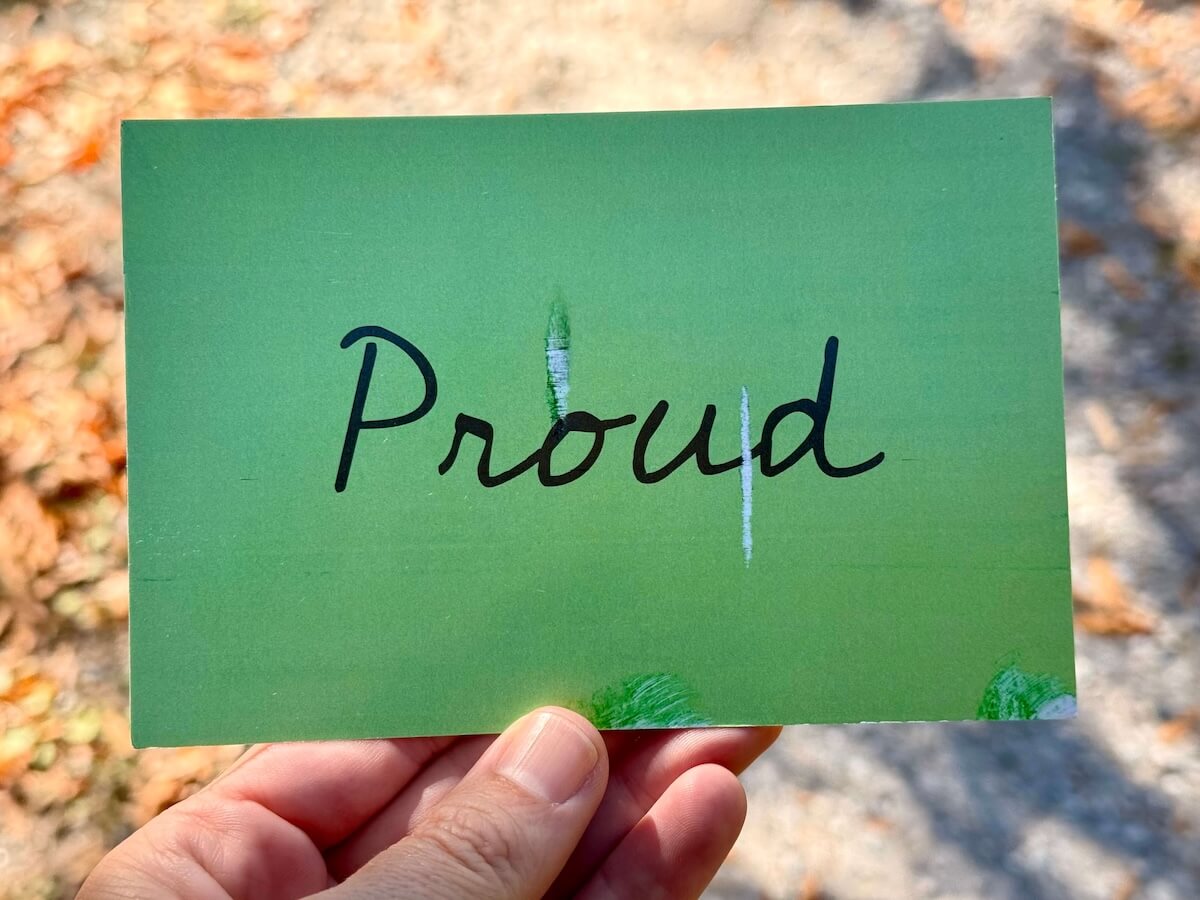
My first automated postcard sent via PostGrid.com
Is it viable?
I analyzed the unit economics: printing and sending three postcards with PostGrid costs $0.82 each. Both Lob and PostGrid have a maximum number of cards you can send on per month. Once you hit the limit, you have to pay a monthly fee, but the cards are much cheaper (around $0.57 each).
Stripe will charge $0.30 base fee, plus a percentage of the total transaction. After some number crunching, I settled on a starting price point of $5, a balance between affordability for users and a viable margin for keeping it sustainable.
Will it scale?
I have no idea, but let’s try. The next challenge is spreading the word and getting more people to send out kind words. I’ve set a goal for my endeavor: send out 300 kind words by the end of 2025. If we can hit this milestone, it won’t just validate the idea, it’ll help prove that other people think there’s real value in these small acts of kindness.
Building ThreeKindWords.com has been a journey of creativity, experimentation, and serendipity. It’s been about more than just postcards and APIs, it’s about finding joy in simplicity and sharing kindness in unexpected ways. If you’re interested in reading more, check out how I built this.